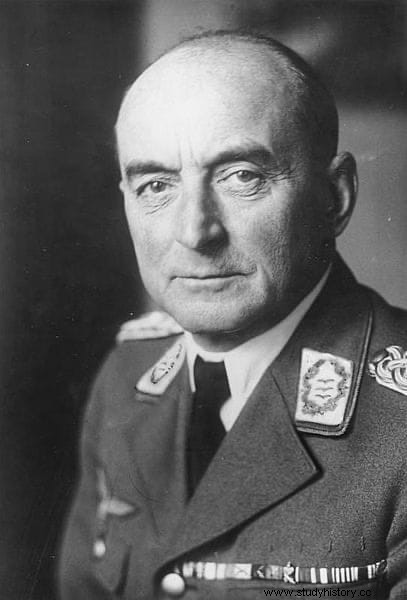One of the most curious plans designed by the German military in the Second World War -and one of the least known as well, by not carrying it out- was the Unternehmen Grün, that is, the Operation Green . The name alludes to the project of invasion of Ireland taking advantage of the circumstances of what was then a young country situated somewhat on the fringes of UK politics.
Ireland existed de facto since December 1922, although it had declared its independence in 1916 in the midst of a complex and bloody process . A self-declared free state, it promulgated its own constitution and, despite being involved in a civil war between those who defended a treaty with England and those who categorically refused, opting for a republican model totally independent (the position of the IRA), in 1937 Eire was born . For the time being, it would continue to depend institutionally on the British Crown, but in the constitution it was planned that it would become a republic.

That and the constancy of the internal division that had led to the civil conflict, made the German General Staff consider the possibility of invading the island and thus have a bridgehead in the British archipelago (an immense air base of enormous strategic value for the Luftwaffe), since it was estimated that the occupation would be much simpler than in the case of England, whose conquest also had its own plan prepared , the Operation Sea Lion . Although it is believed that the intellectual author of the development of Operation Green it was General Fedor von Bock , official responsibility for carrying out the mission fell to General Leonhard Kaupisch , commander of the Fourth and Seventh Infantry Corps, since they would be assigned to that mission. The Fourth already had combat experience, during the invasion of Poland, having earned a brutal reputation.
On August 8, 1940, thirty-two copies were made. of the plan (some are still preserved), classified as top secret, to be distributed among the commanders. He foresaw that a total of fifty thousand men supported by armor, motorized units and commandos, were launched from the ports of Nantes, Lorient and Saint Nazaire, in France , and, once on the island, through an amphibious assault in which four thousand men had to break through by surprise, advancing at high speed - up to a hundred kilometers a day - until they reached Dublin. It was estimated that there would only be a symbolic resistance , as the Irish army numbered less than eleven thousand poorly armed troops, to be saved with massive bombardments and diversionary operations in Cork and Clonmel, while the bulk of the army penetrated through Laois-Offaly and established a base in Kildare.

Once Ireland is occupied, a curfew and martial law will be decreed, since, given the supply difficulties Due to the insular nature of the territory, it would be necessary to seize all the necessary resources to the local population, from livestock to fuel, through provisions. Of course, Operation Green it was to be coordinated with Operation Sea Lion , so that one would start immediately after the other. This has led some scholars to speculate that it was not a real plan but a fictitious one. , intended to confuse the British secret services and for their army to divert troops there. The truth is that Churchill was aware of that project and as a countermeasure he drafted Plan W, which provided for the collaboration of the British and Irish armies to try to stop the invasion from the outset.
Whatever the truth, the fact is that there really was a plan developed in writing, it is true that at the moment of truth some voices advised subordinating it to the Irish Republicans of Eamon de Valera request German help to break definitively with the United Kingdom. In fact, that was one of the possibilities handled by Hitler because the IRA had sent the Abwehr (German secret service) a dossier with a similar proposal years ago, although less detailed; the Abwehr dubbed it the Kathleen Plan and the Berlin Foreign Office called it, more appropriately, the Artus Plan (referring to King Artus or Arthur).
But the Irish never insisted on the issue again and, moreover, some German commanders did not see the viability of their own plan at all. One of them was Admiral Erich Raeder , who considered it impossible to overcome the power of the Royal Navy to be able to supply the troops on Irish soil; according to what he said, there was a risk that they would be isolated and end up being forced to withdraw Like the British at Dunkirk. Also, there were only two cargo ships available in that part of the French coast and it was not clear how the RAF attacks would be avoided. during the crossing along the British coast.
However, Operation Sea Lion was delayed and before the launch in 1941 of the Operation Barbarossa (the invasion of the USSR) was finally abolished in February 1943, making its parallel in Ireland meaningless . The volumes of his memory remain, each one dedicated to a region of Ireland, with photos, plans, postcards, drawings, street maps and varied information that could be considered useful, such as tide schedules, lists of garage owners, railway routes, etc.
